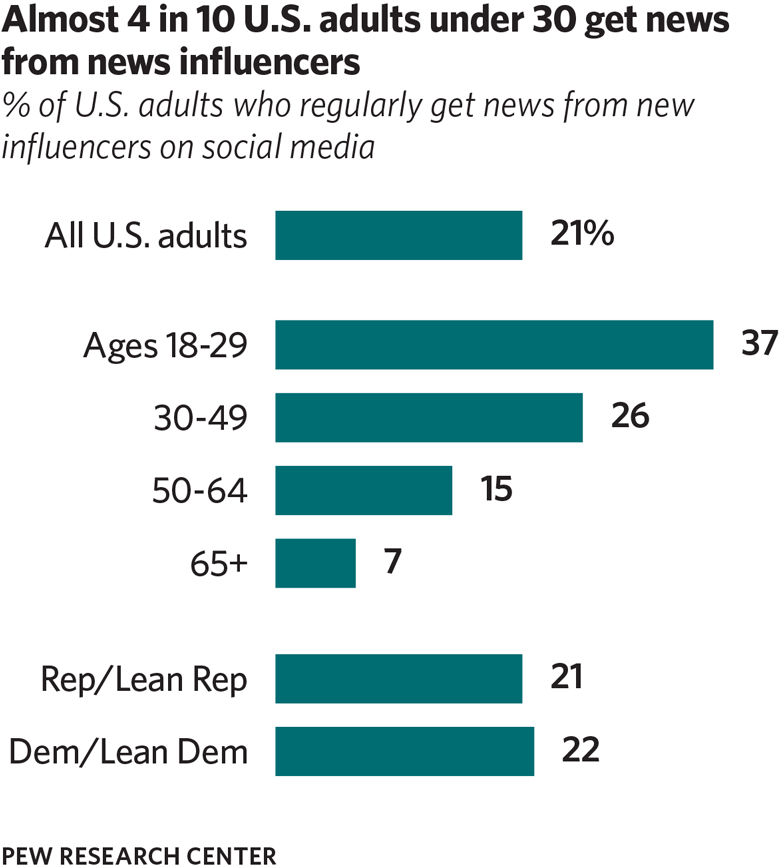
In the heat of the 2024 election, U.S. news influencers seemed to be everywhere. Both Republicans and Democrats gave content creators credentials to cover their conventions—and encouraged influencers to share their political messages. Influencers also interviewed the candidates and held fundraisers for them.
But up until now, it has been difficult to get a sense of the size and characteristics of this new wave of news providers. A Pew Research Center study, as part of the Pew-Knight Initiative, sought to provide a deeper understanding of them by looking at 500 popular news influencers, derived from a review of more than 28,000 social media accounts. The study also conducted a nationally representative survey of Americans to better understand who regularly gets their news from news influencers.
The unique study, released after the November election, found that about 1 in 5 Americans (21%)—including a much higher share of adults under 30 (37%)—say that they regularly get news from influencers on social media. News influencers are mostly likely found on the social media site X, where 85% have a presence, though many are on Instagram (50%) and YouTube (44%). Slightly more explicitly identify as Republican or conservative (27%) than Democratic or liberal (21%). And most are men (63%) and most (77%) are not affiliated with a news organization.
Further looking into Americans’ experience with news influencers, the study found that: Among U.S. adults who get news from news influencers on social media, most (65%) say that news influencers have helped them better understand current events and civic issues. And 7 in 10 say the news they get from news influencers is at least somewhat different from the news they get from other sources.
These Americans also say they get a variety of different types of information, from basic facts and opinions to funny posts and breaking news. When it comes to opinions, most who see them say that they are an even mix of opinions they agree and disagree with (61%), but far more say they mostly agree with what they see (30%) than mostly disagree (2%).

Explore the Issue











